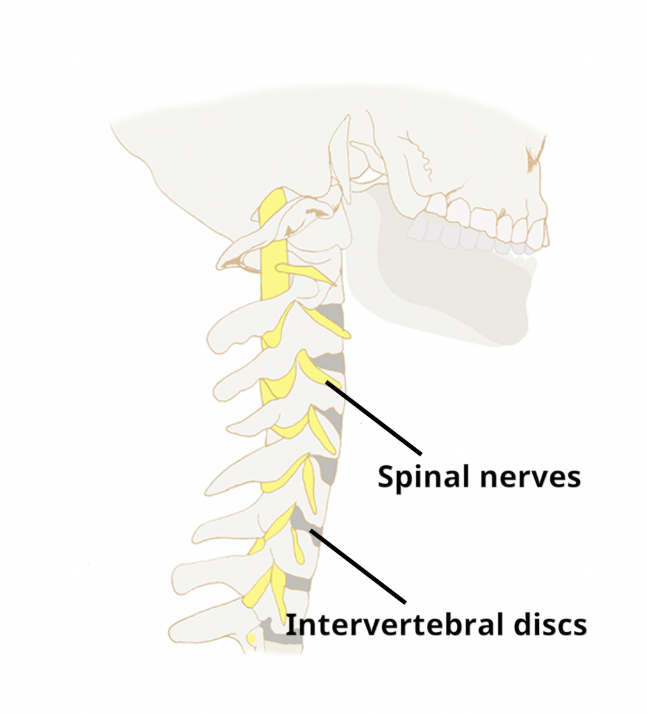
Neck pain can be experienced in the locally in the neck, but can cause pain across the top of the shoulders and in some people pain in the head/headaches. It is normal for these episodes to last for a few weeks and in some cases a few months. A small proportion of these people will develop ongoing symptoms. This is termed persistent neck pain. There is often no clear anatomical cause for persistent neck pain. Studies have shown that the many people will suffer with at least one significant episode of neck pain at some point in their adult life.
Some risk factors for developing neck pain surprise people, as they include more general influences such as stress and lower activity levels. This is thought to be due to sensitisation of the nervous system, muscular tension and general deconditioning/lack of muscular fitness..
How is persistent neck pain treated?
In the majority of cases, the symptoms of persistent neck pain can be managed effectively by non-invasive measures as described below. The most effective are exercises and in those who are sedentary, increasing general activity levels.
Exercises
Specific exercises may be useful to relieve stiffness and discomfort in the spine. It is important that you start with a comfortable number for you and build these up gradually.
These are suggested exercises only. If you are at all concerned about whether these exercises are suitable for you or if you experience any pain while doing them, please seek appropriate clinical advice from your GP or Physiotherapist.
Physiotherapy
Physiotherapy can be offered as a treatment option for neck pain. This involves a physical assessment and discussion about how your symptoms are impacting your life, followed by developing a treatment plan together. Treatment can include:
-
- Exercises form the mainstay of treatment, with advice regarding exercises to improve flexibility and reduce the sensitivity of the muscles, joints and nerves. Some strength exercises can also be recommended where needed.
-
- Manual Therapy, such as manipulation, mobilisations and soft tissue massage. This usually forms a small portion of your treatment.
-
- Advice to help you recognise the things that can help you speed your recovery and avoid aggravating symptoms.
Modifying ergonomics
Modifications include raising your seat height, changing the backrest angle, lumbar wedges as well as ensuring there is an appropriate overall set up if working with display screen equipment. Everyone is different so try out slightly different combinations which may work best for you.
Pain Management Programmes
Some people can experience ongoing, severe symptoms, which can be quite debilitating. Whilst this is relatively uncommon, Circle Integrated Care run pain management programmes to help you manage the symptoms and improve your quality of life.